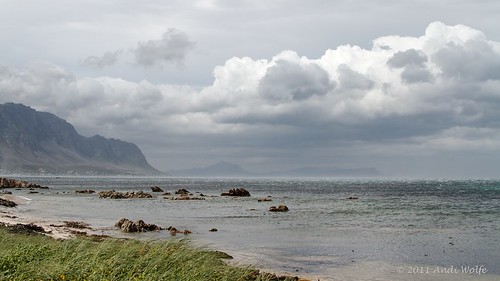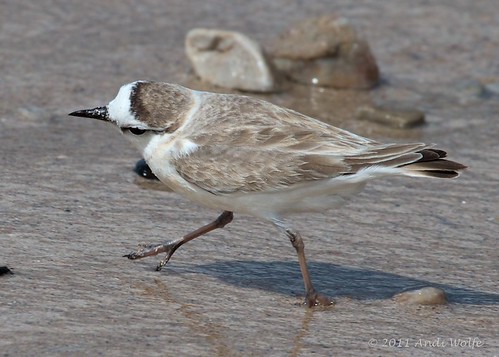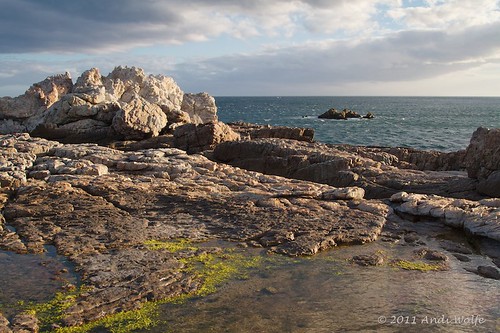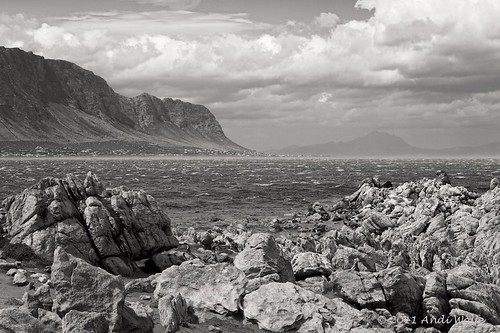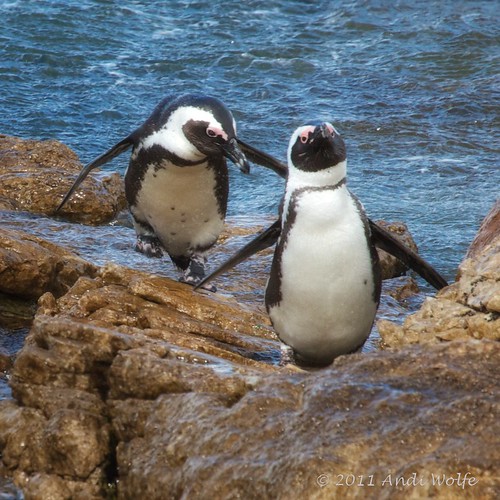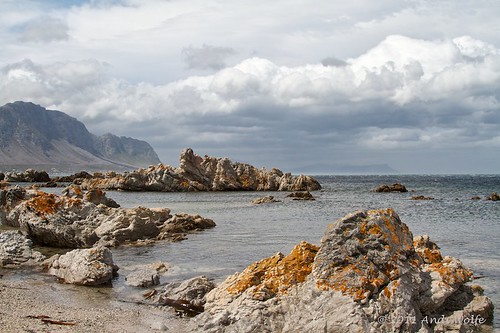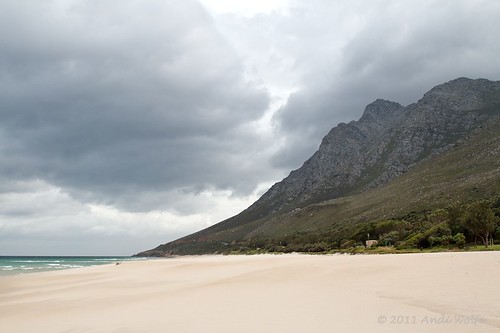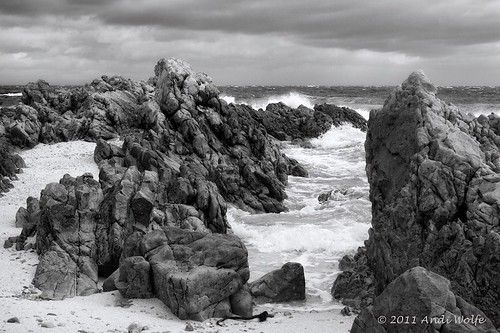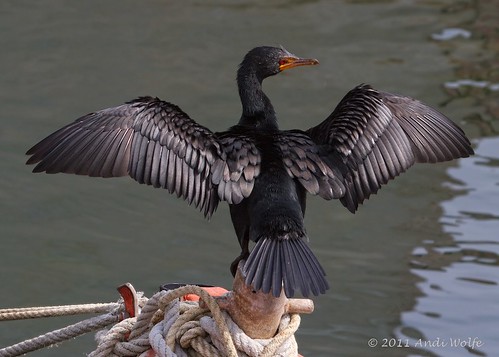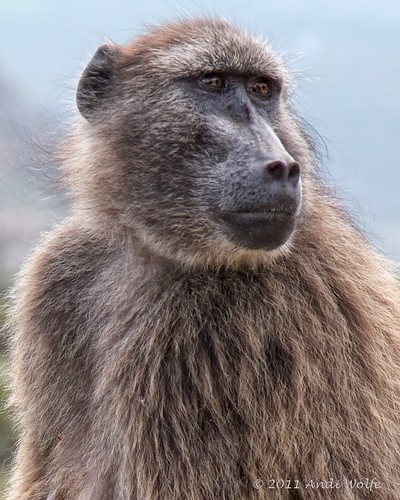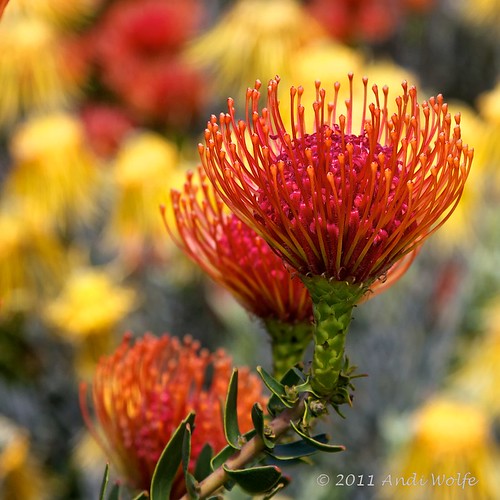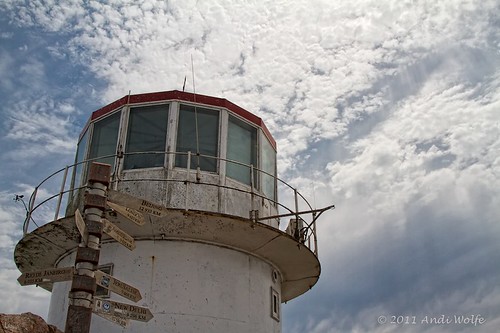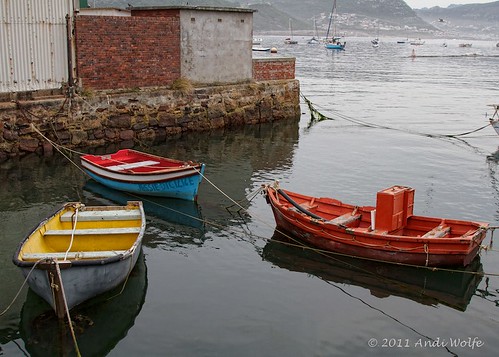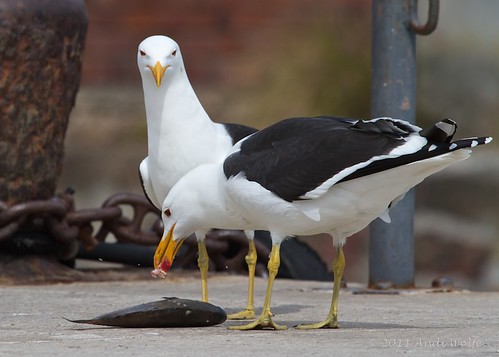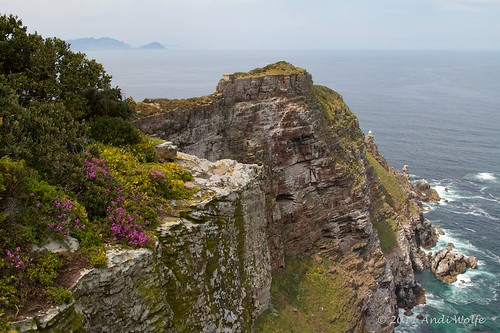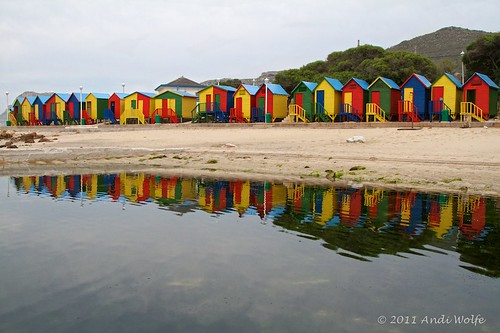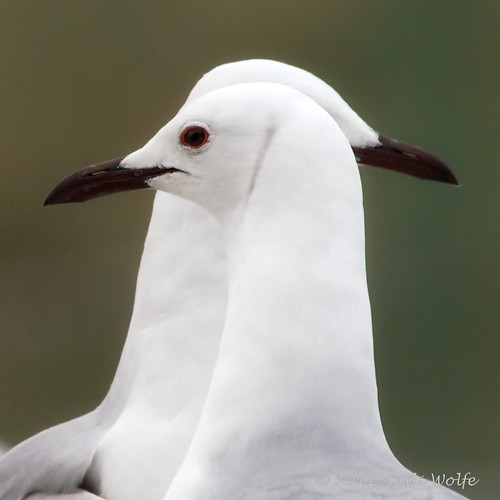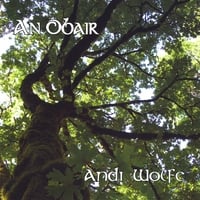I don't usually process my flower photos in black and white, but this image seems to work really well with that effect. I used Silver Efex Pro to do the conversion.
Monday, February 28, 2011
Sunday, February 27, 2011
Betty's Bay
Another seascape along the coast of South Africa. This one was taken at Stony Point, looking across towards Betty's Bay.
Saturday, February 26, 2011
Friday, February 25, 2011
Seascape at Hermanus
Golden light is always a preferred setting for capturing landscapes. Steve and I visited Hermanus late one afternoon in October, 2010 - after a pretty exhausting collecting excursion in Betty's Bay. The wind had been blowing at gale force strengths in Betty's Bay. It wasn't quite as intense over in Hermanus.
Thursday, February 24, 2011
White-fronted plover
These small shorebirds are really cute, and they are fun to watch as they dodge in and out of the way of waves washing ashore. Their coloration makes for good camouflage along the rocky beaches of South Africa. This one was spotted near Stony Point at Betty's Bay.
Wednesday, February 23, 2011
Seascape at Stony Point in black and white
The coastline of South Africa is stunning in color, but processing images in black and white give the seascape a different kind of depth. I've always admired the work of Ansel Adams, and I enjoy seeing his black and white landscapes. He was able to give each photo a degree of depth that one would not expect to see in a black and white photo. Adams spent hours developing each negative using a variety of darkroom techniques.
The digital darkroom is the software used to process digital negatives (i.e., RAW format files). The digital negative has data that is recorded from the sensor. Using a single lens reflex (SLR) camera, one has control over aperture, ISO, shutter speed, and all the other aspects of film photography. The difference is in how we "develop" the negatives.
I use a variety of software packages in my digital darkroom. Most of the time I start by loading my files into Aperture 3. I adjust levels there and get rid of highlight and dark clippings by using the recover and black point sliders. Then I adjust for clarity by using the Definition slider. Finally, I may add a bit of vibrance and then adjust the exposure curves.
After all those steps, I pull the image file into one of the Nik software plug-ins. If the ISO is 400 or less, I skip Define and go right to Viveza 2. That plug-in allows the adjustment of structure, contrast, brightness, etc using control points and sliders. I like that format of adjustment.
After Viveza, I usually will pull the file into Color Efex Pro and use a variety of effects there to tweak certain aspects of the photo (tonal contrast, graduated neutral density filter, polarization, glow or soft focus - depends on the image). In this photo, however, I used Silver Efex Pro to process in black and white. Selecting a flim emulator is the start of this work flow. From there I adjust the filter sensitivities, add some control points to lighten or darken areas of the image, and adjust structure, contrast and brightness. The final touch is to do some split toning - very subtle adjustments of tint to give the photo some depth.
Tuesday, February 22, 2011
Catch me if you can!
There are two colonies of African Penguins within an hour's or so drive from Cape Town. One is at Boulders, on the Cape Peninsula. The other is at Stony Point, just west of Betty's Bay. Of the two spots, I like Stony Point the best. It's not quite as touristy, and the diversity of birds here is much higher.
Along with African penguins, one is likely to see two or three species of cormorants, African oystercatches, a variety of plovers, gulls, egrets, ibis, geese, and other birds who live off the bounty of the sea.
The antics of African penguins are always fun to watch.
Monday, February 21, 2011
Stony Point
Seascape from Stony point, looking across to Betty's Bay. Stony Point is one of the sites for a colony of African Penguins (aka - Jackass Penguins for the way they sound as they call to each other). The wind was blowing so hard that the waves were being blown back to shore. This spot was a bit more sheltered than the rest of the area.
I have to admit that using a camera in these conditions was a bit of a challenge. Sea spray, wind gusts, sand blasting - all added up to an exhausting excursion to take a look at birds.
Sunday, February 20, 2011
Beach at False Bay
This photo was taken October 7, 2010 on a day that Steve and I were heading over to a field site just east of Betty's Bay. The wind was really gusting, but the worst was yet to come as gale force winds hit later in the day - while I was collecting Hyobanche, of course. The pre-storm sky was very dramatic, which made for an interesting photo.
I have to say, though, that I love the beaches of South Africa. They are so scenic and stretch on forever, or so it seems whilst walking on them.
Saturday, February 19, 2011
Pringle Bay seascape
There's something magical about the rugged coastline of South Africa. The ancient history of colliding continents, ripped apart as Gondwanaland separated into the familiar landmasses we recognize in the southern hemisphere, makes for some amazing seascape photography opportunities.
These rugged rocks offer not only some spectacular scenery along the eastern edge of False Bay, but they also host an interesting diversity of life. Shore birds forage for yummy things to eat, seaweed and shells are washed up, tide pools brim with crawling and swimming creatures as well as cnidarians, a variety of mollusks cling to the submerged overhangs, and the rocks are covered in isopods. These critters resemble very large (2 - 4 cm in size!) pill bugs that are so familiar to kids in North America.
Having grown up in Oregon with the opportunity to walk that beautiful coastline, I truly enjoy my work in South Africa when I'm doing fieldwork in the dunes to collect Hyobanche. The easiest access to these field sites tend to be from the beach and so I've become pretty familiar with many, many miles of the South Africa coast.
I notice a lot of overall similarities between the Oregon and South Africa coasts in terms of ruggedness and interesting rocks, but the geology is very different. The Oregon coast was shaped primarily by volcanic activities, including basalt sheet flows. The coast of South Africa shows the legacy of plate tectonics and millions of years of uplift of sedimentary layers.
Have I mentioned how much I love doing fieldwork in South Africa???
Friday, February 18, 2011
Another stunning view of False Bay
South Africa has incredibly beautiful coastlines. I never get tired of seeing them or photographing the scenery there.
Thursday, February 17, 2011
Crowned cormorant
A classic pose for drying wings and feathers. This photo was taken at Simon's Town, South Africa (east side of the Cape Peninsula) Oct 7, 2010. It was Steve's first trip down to Cape Point. We did the usual sight-seeing stops and then had some fun doing field work in a dune field. I'll post on that bit of the day soon.
Wednesday, February 16, 2011
Limpet shells
All along the coastlines of South Africa, where dune fields also occur, one finds limpet shells piled up in the first swale of the dunes. This is usually several hundred feet away from the beach, and up dozens of feet from sea level.
I wonder if these are deposited by gulls or other creatures who eat the animal and leave an intact shell. It's a mystery to me.
Sunday, February 13, 2011
Baboon portrait
Baboons are very clever animals, but have really become a problem on the Cape Peninsula. This is especially true at Cape Point National Park. The animals are so used to people and the fact that tourists carry food that they've become thugs and muggers - all for a chip bag or a boxed sandwich.
It's very seldom that I would be able to get close enough to a wild baboon whilst out in the field to take an intimate portrait. The behavior of wild troops is very different from these accustomed bands of thieves. In the wild, there is usually a sentinel baboon that keeps track of everything going on in the vicinity. When the sentinel spots a hiker, there's a hooting call that alerts the rest of the troop, and off they run.
Saturday, February 12, 2011
Leucospermum
From Kirstenbosch Botanical Garden in Cape Town, South Africa. I love the contrast in colors and the extreme bokeh in this image.
Friday, February 11, 2011
Cape Point Lighthouse
Another lighthouse picture from South Africa. I think the Cape Point Lighthouse has the most spectacular views of all the ones I've visited over there. However, I think it's time for a new coat of paint on this famous landmark.
Thursday, February 10, 2011
Simon's Town
I like these colorful boats, all ready to go out to the marina. I wonder, though, why small boats such as these are painted in such garishly bright colors.
Wednesday, February 09, 2011
Cape Peninsula
This was a fun processing exercise. I processed with Silver Efex Pro to convert the color image to black and white. After that I exported a tiff to Photoshop CS5 to convert it to gray scale. I then added a custom quadtone, brought it back into Aperture and added just a touch of classical soft focus using Color Efex Pro. I like how the tones bring out the patterns in the water.
Tuesday, February 08, 2011
I would really like some fish, please. . .
I had a good time watching these Southern Black-backed gulls as they maneuvered for possession of this fish. They eventually shared it, but the gull in the background first had to wait until the one in front had taken several bites.
Monday, February 07, 2011
Cape Point
I always enjoy seeing this place when I'm able to visit Cape Point National Park. It's only an hours drive south of Cape Town, and it's beautiful no matter what the weather. I have been at this very spot with the wind blowing so hard that you are nearly blown over. On this particular day the weather was calm, the colors of the flower were at their prime, and it was very tranquil. Click on the image for a larger view.
Saturday, February 05, 2011
Something for a gloomy day
We're supposed to get 1 -3 inches of snow by noon, combined with sleet and freezing rain. I'd rather think back to last October when I was doing my field season in South Africa.
I photographed these colorful beach houses at St. James, on the Cape Peninsula. It was Steve's second full day in South Africa so I wanted to give him a tour of the region. We did a bit of collecting later in the day. I'll do a blog post of that site in a day or so.
For now, though, here are some bright primary colors to take my mind off of winter.
Thursday, February 03, 2011
Tuesday, February 01, 2011
South Africa 2010 - Oct 5; Hyobanche atropurpurea
I am making progress, though, and so I will resume posting photos on a sporadic basis. They won't be in calendar order, though - sorry. I also have many hours of video to edit, and that's taking much longer. If someone could figure out how to warp time to give me extra hours every day, I might get this done sooner.
 Oct 5, 2010 was Steve's first day in the field with me. The Laidlers and I met Steve at the airport late the previous night, fetching him in Binky, Chris' faithful Landrover. I didn't give Steve much time to sleep in because we had a long drive up north to meet Mr. Wilhelm Hanekom up in Citrusdal. Mr. Hanekom keeps an eye out for Hyobanche for me, and has been very helpful every year I've been in the field since 2002.
Oct 5, 2010 was Steve's first day in the field with me. The Laidlers and I met Steve at the airport late the previous night, fetching him in Binky, Chris' faithful Landrover. I didn't give Steve much time to sleep in because we had a long drive up north to meet Mr. Wilhelm Hanekom up in Citrusdal. Mr. Hanekom keeps an eye out for Hyobanche for me, and has been very helpful every year I've been in the field since 2002.On this day we were looking for H. atropurpurea, which is what you see in these photos.

Hyobanche atropurpurea is unusual in having dark purple flowers. The purple is so dark that the flowers often appear to be black. They have a bit of a yeasty scent and the wide open corolla, facing toward the ground, together with the dark coloration, suggests rodent pollination to me. There's a postdoctoral researcher conducting the pollination ecology studies on this species, so I hope to know in the next year or so what pollinates this plant.
 Only the inflorescence occurs above ground. The inflorescence is three to four inches tall. The underground rhizome(s) can be quite long, but are very fragile and spindly in this species. It's not obvious what it's connected to in terms of host plants, but that's one of the objectives of my work - to figure out the host range. Hyobanche is a root parasite and my preliminary work, based on DNA forensic studies, suggest that it is able to parasitize many different plants.
Only the inflorescence occurs above ground. The inflorescence is three to four inches tall. The underground rhizome(s) can be quite long, but are very fragile and spindly in this species. It's not obvious what it's connected to in terms of host plants, but that's one of the objectives of my work - to figure out the host range. Hyobanche is a root parasite and my preliminary work, based on DNA forensic studies, suggest that it is able to parasitize many different plants.2010 was a big drought year for South Africa and so it was lucky to find any plants in bloom in the warmer regions of the country. Hyobanche atropurpurea is very common and abundant in the mountains above Citrusdal, but we saw only a few plants in bloom, with many others already past flowering. Normally I would see plants of this species in flower through mid-November.

I may be biased, but I think this species is beautiful. Of course, I say that about every species of Hyobanche. . .

Here's a typical habitat shot. The cape fold belt of the Western Cape has many likely spots to find species of Hyobanche.

Steve didn't have too much difficulty adjusting to the time zone. Figuring out how to use the video camera was a different challenge, though.

Boulders are pretty interesting in the Western Cape. If I were a few decades younger, I'd be tempted to spend a lot of time climbing here.

This is Wilhelm Hanekom. He's been walking the veldt every day for most of his eight + decades and knows it like the back of his hand. He's discovered many new species of plants and has a lot of species epithets in his honor. I have a new species of Hyobanche I want to name after him, also.

One the way back to Cape Town, Steve and I stopped at a petrol station that was next to a small pond. The reed bed was full of Southern Red Bishop birds. This is a male in breeding plumage - one of my favorite birds of South Africa.

